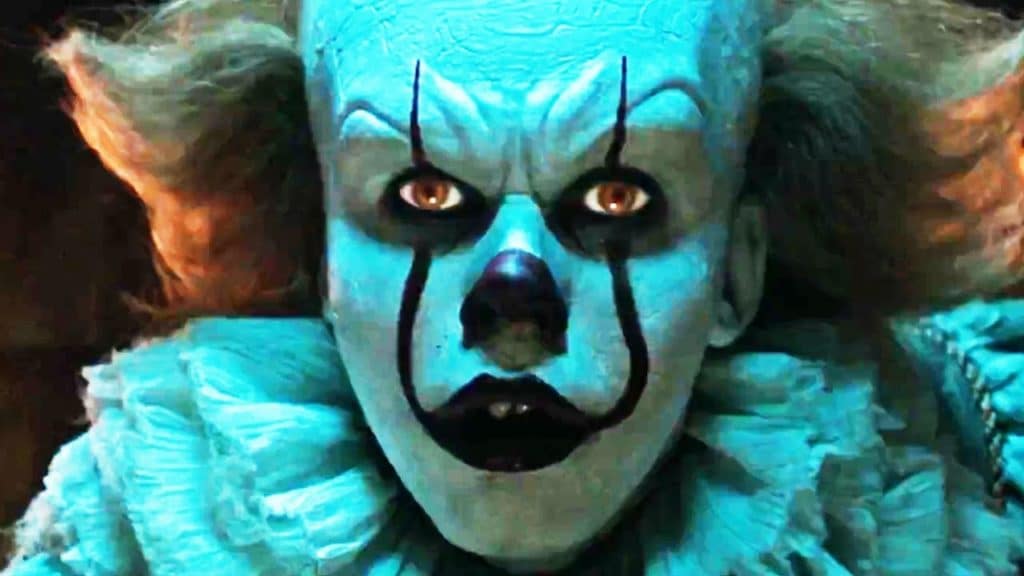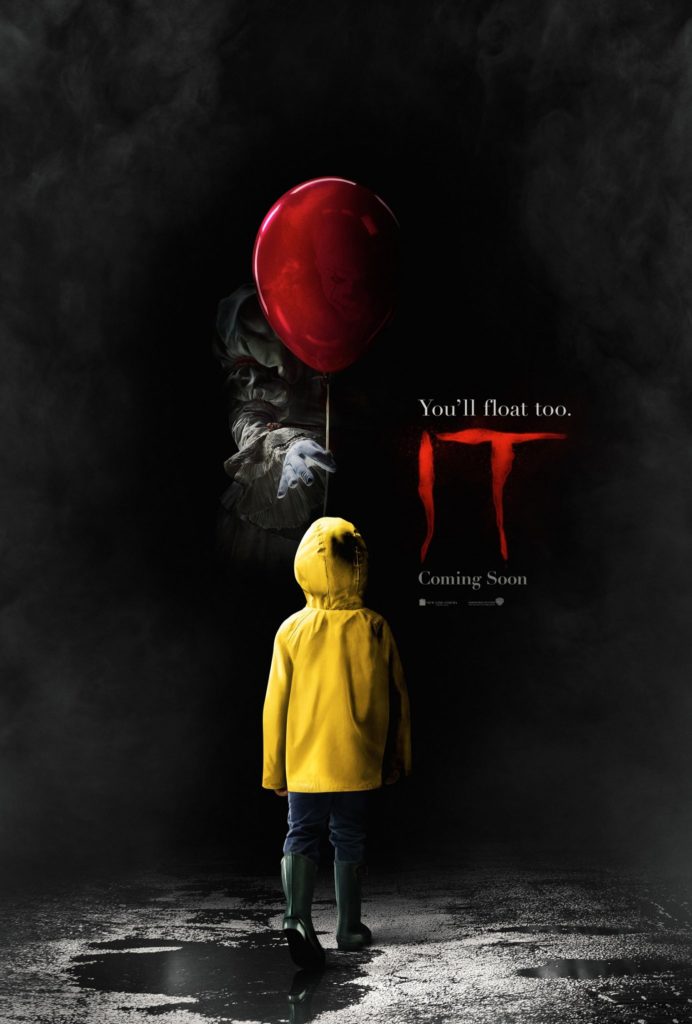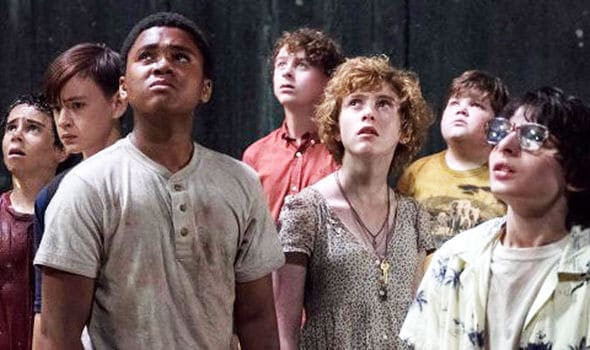 Few writers have had their work adapted for the screen half so much as Stephen King, nor with such variable results, but then this is exactly to be expected when the man himself’s work has varied so wildly over the years. When it comes to the huge tomes from his early days, such as The Stand and IT, the TV miniseries has often seemed to be the way to go, rather than making a feature film. Particularly bearing in mind that epic-length films are really more a contemporary domain, it no doubt made sense, even if for manageability alone, to serialise the events of the books over a period of weeks. The resulting TV version of IT, made in 1990, for all its (now apparent) flaws cemented itself as a formative experience for many viewers, particularly those of us in our thirties. Look at it now, and what you mainly see are the awkward birth pangs of CGI; back then, though, everyone – very few of whom had read the book, and many of whom were children themselves – were frightened of Pennywise the Clown.
Few writers have had their work adapted for the screen half so much as Stephen King, nor with such variable results, but then this is exactly to be expected when the man himself’s work has varied so wildly over the years. When it comes to the huge tomes from his early days, such as The Stand and IT, the TV miniseries has often seemed to be the way to go, rather than making a feature film. Particularly bearing in mind that epic-length films are really more a contemporary domain, it no doubt made sense, even if for manageability alone, to serialise the events of the books over a period of weeks. The resulting TV version of IT, made in 1990, for all its (now apparent) flaws cemented itself as a formative experience for many viewers, particularly those of us in our thirties. Look at it now, and what you mainly see are the awkward birth pangs of CGI; back then, though, everyone – very few of whom had read the book, and many of whom were children themselves – were frightened of Pennywise the Clown.
Of course, knowing this, the new, epic-length film version of IT has repositioned itself so that the Losers Club are actually growing up in the late 80s, not the 50s; the nostalgists which the film is depending on now see their own childhoods reflected within the story, rather than seeing their childhoods simply in the memory of watching the series. The snake is eating its own tale: series like Stranger Things come along and commemorate the creepy 80s, then a film comes along which casts some of the same kids in a newly 80s story. But then, in a film about children’s fears, this approach is completely in keeping with things as a whole.
We start on familiar territory, and one of the many iconic scenes we saw first in 1990, only made more savage, more jagged for our jaded post torture porn palates (if that phrase gets into The Guardian, you saw it here first, and I’m very sorry.) On a stormy afternoon in Derry, Maine, older brother Billy (Jaeden Lieberher) is helping his kid brother Georgie (Jackson Robert Scott) to wax a paper boat, so that Georgie can go and sail it along the flooded gutters. The boat sails really well, so much so that little Georgie can’t keep up, and the boat disappears down a drain – but someone catches it. Georgie is amazed to see a clown deep within the sewer, who promises him his boat back, if he’ll only reach out and take it…
Months go by. Billy and his family are not alone in having children missing, but as devastating as this is, Billy and his friends have enough hell from their day to day lives: bullying, isolation, puberty, indifferent or downright wicked adults. It’s a combination of all of this which presses the so-called ‘Losers Club’ into the dual world of escapism and danger which solving these mysteries entails; slowly, they begin to piece together a unique puzzle, and they throw themselves into the path of something bizarre, demonic and very hungry which has long been hiding in the sewers beneath their home town.
This is not the full picture, and indeed, what turns out to be IT: Chapter One only concerns itself with the flashbacks to childhood, which link the Losers Club back together as adults in the novel. It’s clearly explained that more is to follow, and the way in which the story has been chaptered here actually works well – or at least, the first film does, so I hope subsequent films do likewise. There are certainly a fair few questions about Pennywise and his actions which could be explored at some point; perhaps there’s some assumption that viewers will already appreciate the extra dimensional elements already, which is fair – or, the film also works perfectly well as a straightforward horror staple, the omnipotent bad guy who knows just what you fear. It would however be interesting to see how much exposition is going to follow.
 IT also uses its now thirty-years-old setting, a world before health and safety, safeguarding and more concerted efforts to tackle bullying, to present childhood itself as horrific. Sure, these kids didn’t have to prefix ‘bullying’ with ‘cyber’, but no one was tranquilised by mobile phones and social media, either: it plain didn’t exist. Your plight was your own, and your world ended at the edge of town, or went as far as your friendship group – if you had one. It seems to me that knowing all of this – seeing these changes – has also been used to add to the impact of the supernatural horror. (This would have been as much the case had they left the setting in the mid-twentieth century, mind, but fewer of us would now recognise that in the same degree of detail.) As for the adults in IT, and bearing in mind that many viewers are now approximately the same age as them and not the kids, they’re represented as negligent at best, incestuous at worst: they cajole, they medicate, they exploit but most of all, they ignore their offspring completely. Their children are ripe pickings for any sinister force which might come along.
IT also uses its now thirty-years-old setting, a world before health and safety, safeguarding and more concerted efforts to tackle bullying, to present childhood itself as horrific. Sure, these kids didn’t have to prefix ‘bullying’ with ‘cyber’, but no one was tranquilised by mobile phones and social media, either: it plain didn’t exist. Your plight was your own, and your world ended at the edge of town, or went as far as your friendship group – if you had one. It seems to me that knowing all of this – seeing these changes – has also been used to add to the impact of the supernatural horror. (This would have been as much the case had they left the setting in the mid-twentieth century, mind, but fewer of us would now recognise that in the same degree of detail.) As for the adults in IT, and bearing in mind that many viewers are now approximately the same age as them and not the kids, they’re represented as negligent at best, incestuous at worst: they cajole, they medicate, they exploit but most of all, they ignore their offspring completely. Their children are ripe pickings for any sinister force which might come along.
Whilst the sinister force itself relies on jump scares and a brand new toolbag of terrifying antics, the end result is definitely entertaining, with some ingenious new scenes – and no one could level the charge that the SFX here is lacking, though how they’ll feel in another twenty-seven years remains to be seen. The film moves at a fast pace, doesn’t skimp on the gruesome carnival of Pennywise’s tricks, and ramps up the splatter throughout, giving rise to complaints from some quarters that the genuine otherworldliness of the novel has been sacrificed. It’s certainly true that IT (2017) takes its cues from the likes of Insidious as much as it does the old miniseries, and it looks every inch the modern horror, with more fast-moving, snarling antagonists, heavy use of shadow and even the odd moment you catch yourself recalling from the many Far Eastern horrors which have emerged in the past twenty years or so. Still, considering he only gets a few moments of screen time, Bill Skarsgård does a decent job as Pennywise, a challenging role for someone themselves only in their twenties. I feel that the nu-Pennywise lacks something of the innocence which Tim Curry was able to convey (and then shed, to great effect) but this he makes up for, with the aid of clever special effects assistance, in scenes which are brand new and now very much his own. It’s probably fairly unlikely anyway, but I never want to see a slide projector again.
So, it’s been simplified, it’s been dressed up in new clothes, and it’s been (perhaps slightly cynically) repackaged, but it would be difficult to deny that the new, faster, sleeker and even more monstrous IT isn’t vastly entertaining anyway. Decisions have to be made whenever turning to Stephen King for source material, but I think that, largely, the right decisions outweigh the more questionable ones here.
IT is on general release in cinemas now.
